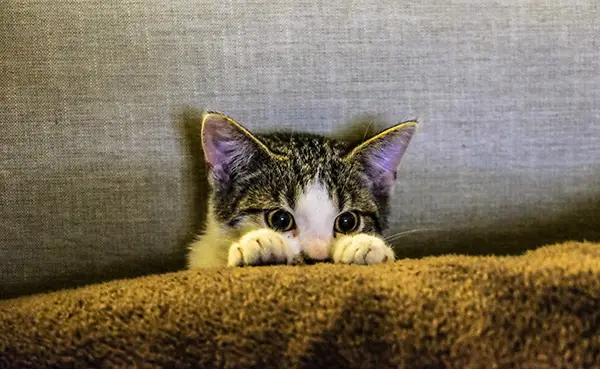
Diabetes isn’t exclusive to humans. Even your beloved feline may suffer from it. It happens when your cat fails to produce enough insulin in its body. The lack of insulin means that glucose remains in the bloodstream, leading to high blood sugar levels. Like humans, cats with diabetes struggle in many ways. It is something that you must right away to prevent health deterioration and death.
What Are the Symptoms of Feline Diabetes?
It’s not like you wake up one morning and discover that your cat has diabetes. It does not happen overnight. Instead, the disease goes through gradual progression, and some of the symptoms may appear to be unrelated at first. The primary reason is the presence of excess sugar in the system. You might ask, “why is there excess sugar in my cat’s body?” The reason is that her body fails to absorb the glucose from the food she eats, which also is the reason why she always appears hungry. The increase in appetite ironically causes weight loss.
Another sign that your cat may have diabetes is when she seems to be always thirsty. It’s a natural response as the body tries to get rid of the excess sugar in the blood by flushing it through the kidneys.
Cat Diabetes Complications
The worst thing you could do for your diabetic feline is ignoring it. There is no way for your cat to get better or live a healthy life if you don’t commit to understanding the possible complications. One thing you must avoid is feeding her with everything you can find at the pet store. Be reminded that the severe complications of diabetes occur when the food the cat eats contribute to the steady increase of sugar.
Untreated diabetes eventually progresses into ketoacidosis, highlighted by dehydration, lethargy, and loss of appetite. The worst thing that can happen right before death is diabetic neuropathy. It is when your cat develops muscle weakness and lame hind legs that will prevent her from walking or even getting up.
Doing Something About It
You know by now that diabetes in cats can be fatal. But you can do something about it. If you’re unsure about the symptoms, the best response is to take your furry buddy to the veterinarian. If you suspect something has changed with your cat’s eating habits or level of activity, then your vet can determine the potentiality of diabetes.
The quicker you get a diagnosis, the better chances you have of helping your cat service. Even though diabetes is incurable, the vet can devise a treatment plan to control it. Diabetes control includes formulating a balanced and healthy diet combined with insulin injections.
There is no reason to be utterly concerned about the welfare of your cat if you commit to helping it go through the ordeal. Your job as the owner is to care for your cat since there’s no way that she can do it on her own. But when you fail to acknowledge that, then your cat will most likely succumb to untreated diabetes.
Excessive Thirst
As soon as your cat’s body responds to the buildup of sugar by overproducing insulin, it will force the kidneys to work harder to flush the excess out. It means that the cat must replenish the fluids it loses, thereby forcing it to drink more water. Frequent thirst is one of the earliest signs of untreated diabetes.
Weight Loss
Both the shortage and excess of insulin in the body results in substantial changes in your cat’s appetite. Whether she is experiencing an increased or decreased appetite, chances are she’ll lose weight. A decrease in appetite corresponds to the lack of nutrients.
Lethargy
Untreated diabetes leads to frequent spikes in blood glucose levels. When that happens, your cat feels depressed and lethargic. It’s the same thing when you are dizzy because of the lack of sleep or when you’re too tired from a day’s work. So, if you notice that your cat is sleeping most of the time or she doesn’t have the usual energy to play, then don’t forget to ask your vet about it. It may very well be the onset of diabetes.
Frequent Urination
Frequent urination is a result of overworked kidneys. It is accompanied by increased thirst. If you don’t recognize your cat’s need for water, it could lead to dehydration. But the more sensible approach is by addressing the condition.
Advanced Symptoms
Untreated diabetes may develop into a more severe health issue, and there are a handful of symptoms that you must learn to identify. If you keep on ignoring the early signs, you might see your cat suffering from rapid breathing, constant vomiting, kidney failure, coma, and eventually, death.
Diabetes will have severe effects on the feline’s pancreas and kidneys. The kidneys are forced to work hard to process the extra insulin. If you happen to see any of those signs we discussed, you must take your cat to the vet as soon as possible for an insulin test.
